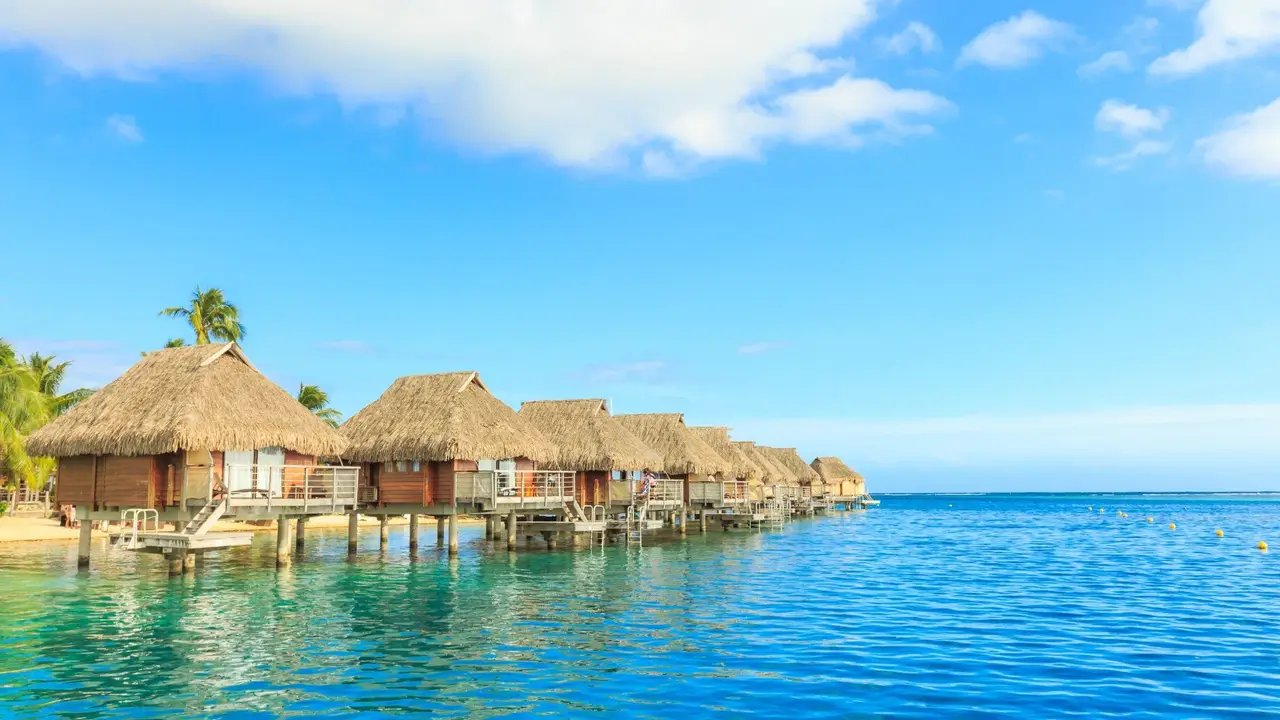Best Scuba Diving for Manta Ray Sightings
Learn where and when to find the most reliable manta ray encounters for an unforgettable dive.

Best Scuba Diving for Manta Ray Sightings
Understanding Manta Ray Behavior and Habitats
Manta rays are cartilaginous fish, closely related to sharks and skates. There are two main species: the smaller reef manta (Mobula alfredi) and the larger oceanic manta (Mobula birostris). Both are filter feeders, meaning they consume large quantities of plankton and small fish by swimming with their mouths open. This feeding behavior is often what attracts divers, as mantas can be seen gracefully looping and barrel-rolling through plankton-rich waters. They also frequent 'cleaning stations,' specific reef areas where smaller fish remove parasites from their skin. These cleaning stations are prime locations for reliable manta sightings, as the mantas will often hover patiently, allowing divers ample time to observe them. Manta rays are found in tropical and subtropical waters worldwide. Their movements are often influenced by plankton availability, which in turn is affected by currents, tides, and seasonal changes. Understanding these patterns is key to planning a successful manta ray diving trip.Top Global Manta Ray Hotspots and Best Times to Visit
Let's explore some of the most renowned destinations for manta ray encounters, along with their optimal diving seasons.Maldives Manta Ray Encounters
The Maldives is arguably the world's premier destination for manta ray sightings, particularly for reef mantas. The atolls create a perfect environment for these creatures, with abundant plankton and numerous cleaning stations.Hanifaru Bay, Baa Atoll: This UNESCO Biosphere Reserve is legendary. During the southwest monsoon (roughly May to November), massive aggregations of mantas, sometimes hundreds, gather here to feed on plankton trapped in the bay. It's a snorkeling-only site to protect the mantas, but the experience is unparalleled. The peak season is typically July to October.
Addu Atoll: Located in the southern Maldives, Addu offers year-round manta sightings, though the numbers fluctuate. Cleaning stations are active throughout the year, making it a reliable spot even outside the Hanifaru Bay season.
North Male Atoll: Several cleaning stations here, like Lankan Manta Point, offer consistent sightings, especially during the northeast monsoon (December to April).
Indonesia Manta Ray Diving
Indonesia, with its vast archipelago, boasts several incredible manta ray destinations.Raja Ampat: Known for its unparalleled biodiversity, Raja Ampat is also a fantastic place for mantas. Sites like Manta Ridge and Manta Sandy are famous cleaning stations where both reef and oceanic mantas can be seen. The best time to visit is generally October to April, when the waters are calmer and plankton is abundant.
Komodo National Park: Home to the famous Komodo dragons, this park also offers incredible manta diving. Manta Point and Karang Makassar are well-known for consistent sightings, especially during the dry season (April to December). You can often see mantas feeding in strong currents here.
Nusa Islands (Bali): Just off the coast of Bali, Nusa Penida and Nusa Lembongan are popular for their resident manta populations. Manta Point and Manta Bay are reliable sites, with sightings possible year-round, though conditions are best from April to October.
Hawaii Manta Ray Night Dives
Kona, on the Big Island of Hawaii, offers a unique and world-famous manta ray experience: the night dive. This is primarily for oceanic mantas.Kona, Big Island: Divers gather after sunset, and powerful lights are shone into the water, attracting plankton. The mantas then come to feed on the concentrated plankton, often performing incredible acrobatic displays right in front of divers. This experience is available year-round, with very high success rates.
Other Notable Manta Ray Destinations
Palau: Known for its healthy reefs and strong currents, Palau offers excellent opportunities for manta sightings, particularly at sites like German Channel. Best visited from October to May.
Fiji: The Yasawa Islands and Kadavu are known for their manta ray populations, especially during the cooler months (May to October) when plankton blooms are more common.
Mexico (Socorro Islands): For those seeking oceanic mantas, the remote Socorro Islands (part of the Revillagigedo Archipelago) offer some of the most incredible encounters. These mantas are known for their curious and interactive behavior. The season runs from November to May.
Essential Gear for Manta Ray Diving and Photography
While any standard scuba gear will suffice for a manta ray dive, certain items can enhance your experience, especially if you're hoping to capture these moments.Recommended Dive Computers for Manta Ray Encounters
A reliable dive computer is crucial for safety and maximizing your bottom time, especially when you're focused on observing marine life. Here are a few top picks:Garmin Descent Mk2i: This high-end dive computer offers advanced features like air integration, GPS, and multiple dive modes. Its clear, customizable display makes it easy to monitor your no-decompression limit (NDL) while keeping an eye on the mantas. The integrated GPS is great for marking dive sites. Price: Around $1,400 - $1,600 USD.
Shearwater Perdix AI: A favorite among technical and recreational divers alike, the Perdix AI is known for its large, easy-to-read screen and intuitive interface. Air integration allows you to monitor your tank pressure wirelessly. Its robust build and long battery life are perfect for multiple dives. Price: Around $1,000 - $1,200 USD.
Suunto D5: A stylish and user-friendly option, the Suunto D5 features a vibrant color screen and customizable display. It's easy to navigate and offers wireless tank pressure monitoring. It's a great choice for divers who want a balance of functionality and aesthetics. Price: Around $700 - $900 USD.
Best Underwater Cameras for Capturing Manta Rays
Capturing the majesty of a manta ray requires a camera that performs well in low light and has a good wide-angle capability.Olympus TG-6 with PT-059 Housing: This compact setup is a fantastic choice for beginners and experienced photographers alike. The TG-6 is tough, waterproof to 50ft (15m) on its own, and excels in macro and wide-angle with the right accessories. The PT-059 housing extends its depth rating to 147ft (45m). It's user-friendly and produces excellent image quality for its size. Price: Camera around $450 - $500 USD, Housing around $300 - $350 USD.
GoPro Hero 11 Black with Protective Housing: For video enthusiasts, the GoPro is hard to beat. The Hero 11 Black offers incredible 5.3K video resolution and excellent image stabilization. While its small sensor can struggle in very low light, it's perfect for capturing dynamic manta ray interactions. Make sure to use a dedicated dive housing for depths beyond its native waterproof rating. Price: Camera around $400 - $500 USD, Housing around $50 - $70 USD.
Sony RX100 VII with Nauticam Housing: For those looking for a more advanced compact camera, the Sony RX100 VII offers a larger 1-inch sensor, fast autofocus, and excellent image quality. Paired with a high-quality housing like Nauticam, it becomes a powerful tool for both stills and video. This setup is more of an investment but delivers professional-level results. Price: Camera around $1,200 - $1,300 USD, Housing around $1,000 - $1,500 USD.
Essential Accessories for Manta Ray Photography
Wide-Angle Wet Lens: For compact cameras, a wide-angle wet lens (like the Nauticam WWL-1B or Inon UWL-H100) is almost essential for capturing the full span of a manta ray. These lenses attach to your housing port underwater. Price: $500 - $1,500 USD.
Video Lights or Strobes: Even in daylight, adding artificial light can bring out the true colors of the mantas and the surrounding reef. For video, continuous video lights (e.g., Keldan, Light & Motion) are great. For stills, strobes (e.g., Inon Z-330, Sea & Sea YS-D3) provide powerful bursts of light. Price: Lights/Strobes from $500 - $2,000+ USD each.
Tray and Arms: A tray provides a stable platform for your camera and housing, while arms allow you to position your lights or strobes effectively. Price: $100 - $500 USD.
Responsible Manta Ray Interactions and Conservation
When diving with manta rays, it's crucial to remember that we are guests in their home. Responsible interaction is key to ensuring these magnificent creatures continue to thrive and that future generations can enjoy them.Do's and Don'ts of Manta Ray Diving
Do:
- Maintain a respectful distance (typically 10-15 feet or 3-5 meters).
- Remain calm and minimize sudden movements.
- Stay low and observe from below the manta, allowing them to approach you if they choose.
- Control your buoyancy perfectly to avoid touching the reef or stirring up sediment.
- Listen to your dive guide's briefing and follow their instructions.
- Support operators who prioritize manta ray conservation and responsible tourism.
Don't:
- Chase, touch, or try to ride the mantas. This can stress them and disrupt their natural behavior.
- Block their path or cleaning station access.
- Use flash photography directly at their eyes, especially during night dives.
- Feed them or leave any trash in the water.
- Harass them in any way.
:max_bytes(150000):strip_icc()/277019-baked-pork-chops-with-cream-of-mushroom-soup-DDMFS-beauty-4x3-BG-7505-5762b731cf30447d9cbbbbbf387beafa.jpg)






